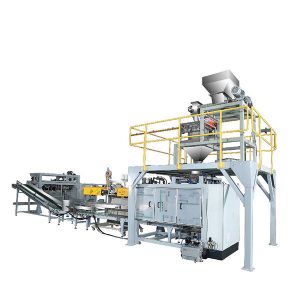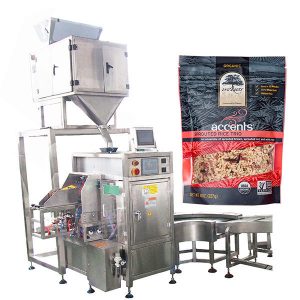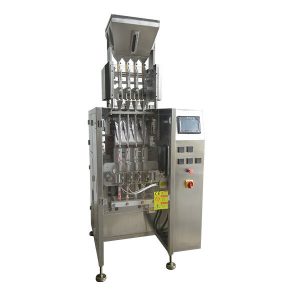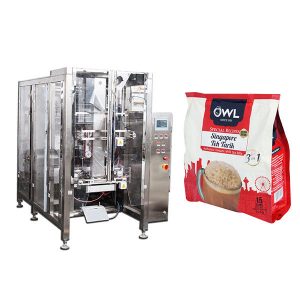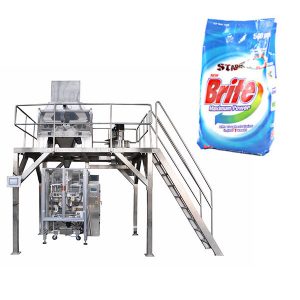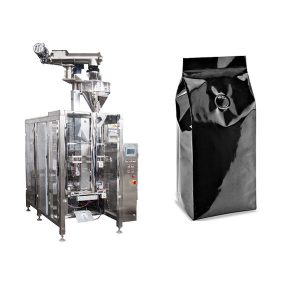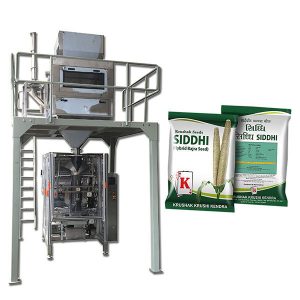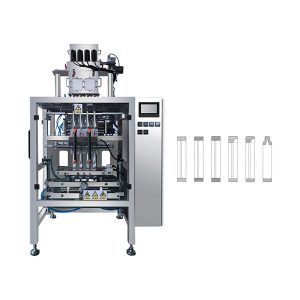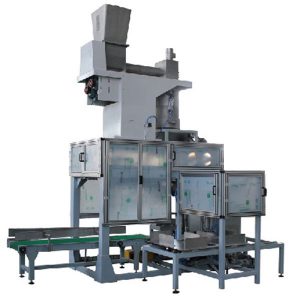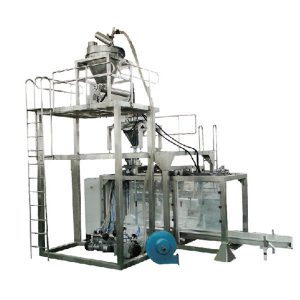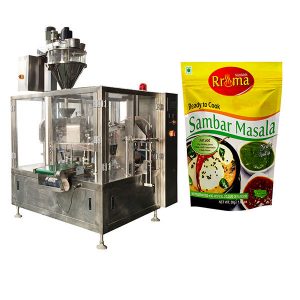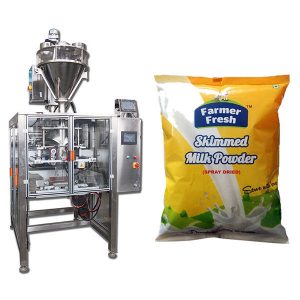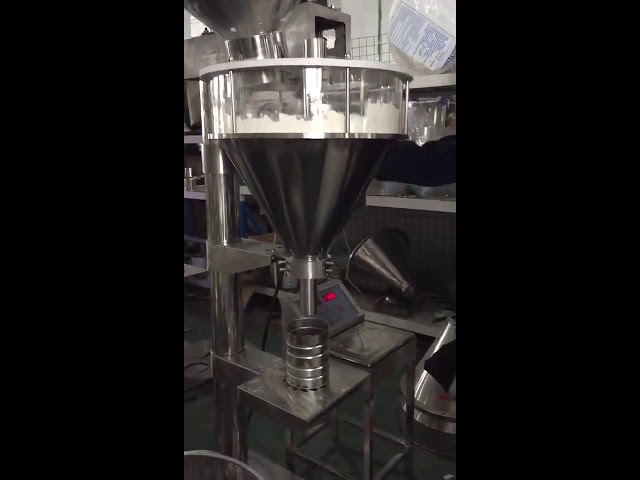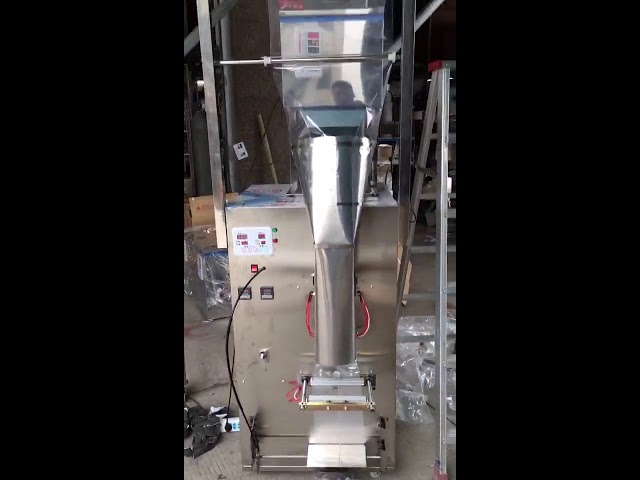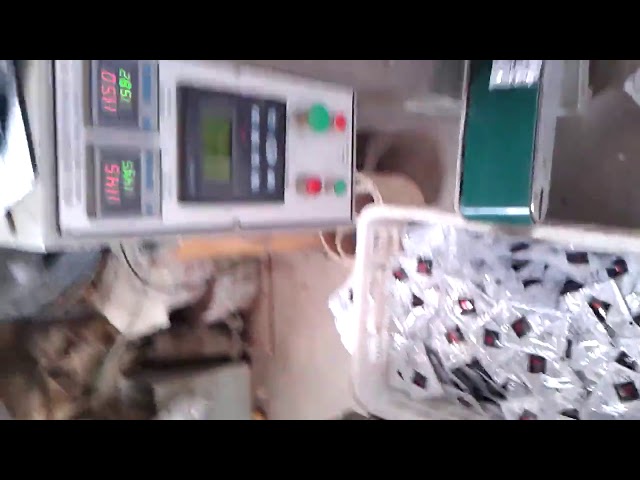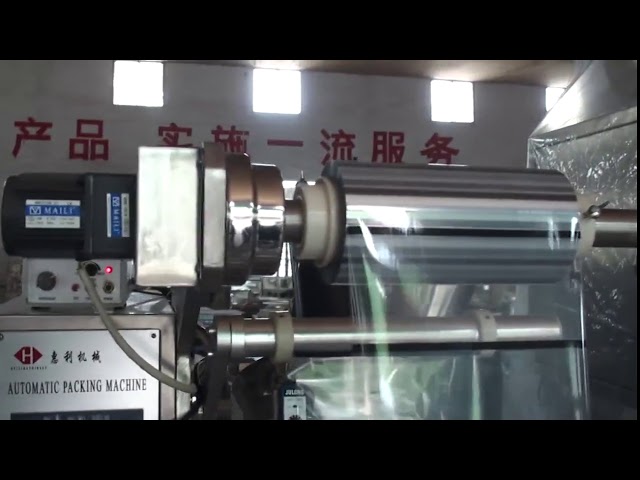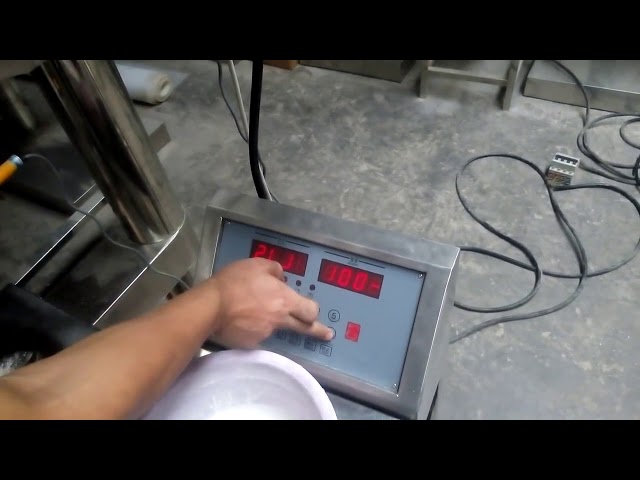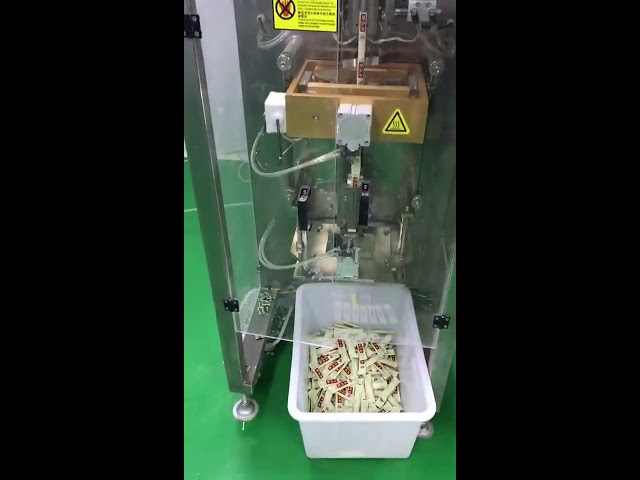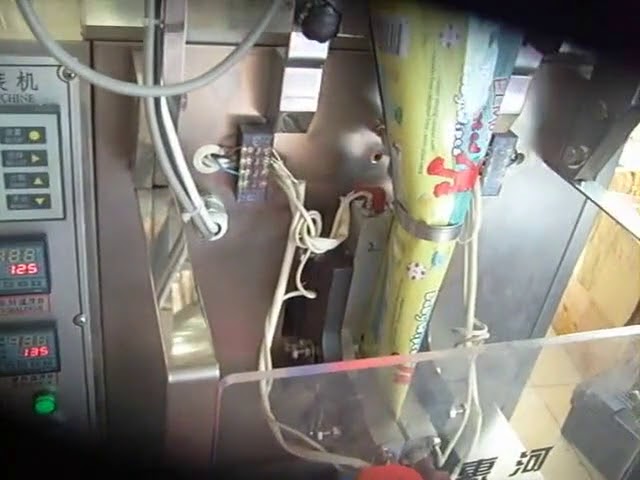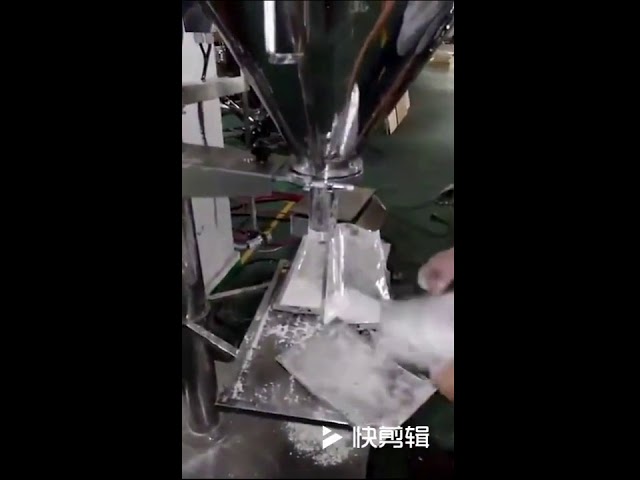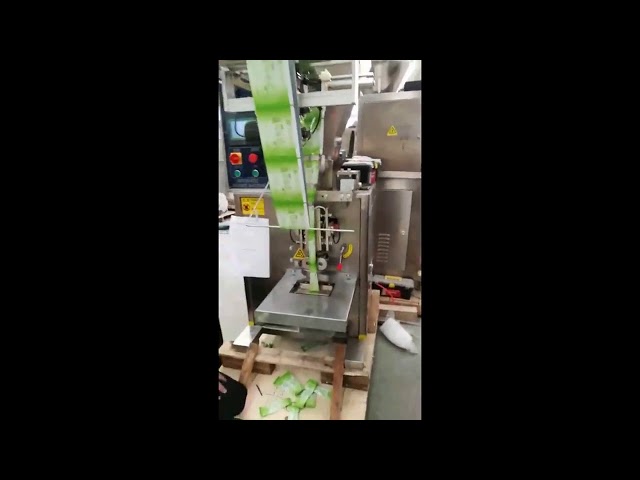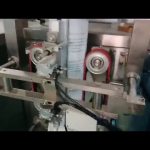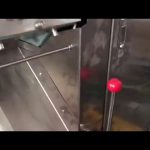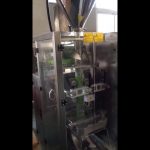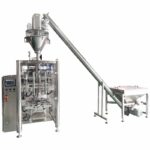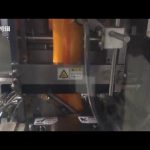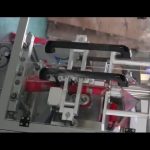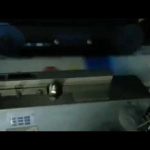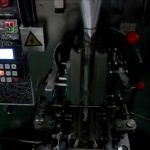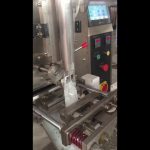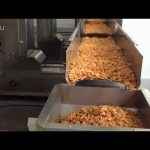Iapack offers powder packaging machines that offer specific packaging solutions for the packaging of Detergent and chemical products. Horizontal packaging machines like the sprint cup and excel cup series take special precautions to ensure that containers are specifically selected so that chemicals wont react with them and become hazardous.
It employs a screw device for measuring blanking material; Meanwhile it facilitates adjustment of temperature and packaging speed. Furthermore, location is made on an photoelectric basis, thus enjoy high precision in bag manufacturing
Range of application
This machine is suitable for the packing of foodstuff, chemical products, medicinal. For example: milk powder, soy milk powder, oatmeal, sesame paste, sugar, flavoring, seasoning and all kinds of medicine taken with water
Introduction to powder packing machines
Pouch filling and sealing machines accomplish two main things: Dispense product into preformed pouches and then seal the bags shut.
There are two main designs for this machine type: Rotary and inline. The differences between the two are in the machine layout.
An inline pouch machine packages products in a straight line, with the beginning and ending points of the process at opposite ends, requiring more floor space.
A rotary pouch packing machine is laid out in a circular fashion, meaning the start point of the packaging process is right next to the endpoint. This creates a better ergonomic setup for operators and requires minimal floor space. Because of their popularity for powder packaging, we’re taking a closer look at only the rotary design in this article.
Rotary pouch fill and seal machines can feature one, two, or four bag infeed ‘lanes’, with a simplex (single lane) model being the most in-demand for powder packaging. When packaging speed requirements are in excess of single-lane output, a company can upgrade to a machine with additional infeed lanes to meet throughput needs.
On a rotary pouch packing machine, separate static ‘stations’ are laid out in a circular fashion, each one performing a distinct step in the pouch packaging process. There are usually between 6 – 10 stations on a rotary pouch fill and seal machine, with 8 stations being the most popular configuration. The interior portion of the machine moves in a counter-clockwise fashion, stopping briefly at each station.
Powder Packing Machine Show
Technical Specifications
| Model | ZVF-620 |
| Metering mode | Multi head scale |
| Bag Size | L240/300/400mm-W180/220/250/290mm |
| Air consumption | 6kg/cm2 2.5m3/min |
| Filling weight | 200-500g 500-2000g |
| Packing accuracy | Packing weight≤100g deviaiton≤±1g〉100g deviaiton≤±1% |
| Packing speed | 25-60Bag / min |
| Sealing type | Back seal |
| Voltage | 380V/220V 50-60HZ |
| Power | 4kw |
| Weight | 650/750/800kg/900KG |
| Volume of the whole machine | 2200×900×2400mm |
Features
1.More than 20 languages can be chose,parameter and function setting convenient with touch screen.
2.PLC intelligent control system,operation more steady without stopping machine.
3.Double frequency converter control, bag length can be set and cut at one step, saving time and film.
3. Self-diagnose function, all the fault will be display on the screen,easy to maintenance.
4. High sensitivity photoelectric eye color tracing, number input of bag size ,cutting position accurate.
5.Temperature independent PLC control, more suitable for packing different materials.
6. Positioned stop function, without sticking knife or wasting film.
7. Simple driving system, reliable working, convenient maintenance.
8. All control is realized through solfware, easy for function adjusting and technical updating.
Packing Process
1. Pouch feeding conveyor & pickup the pouch
2. Date coding & Zipper open device (option)
3. Open the bottom of pouch, for self stand pouch
4. Pouch top opening
5. First filling position
6. Second filling position (option)
7. First sealing position
8. Second sealing position (cold seal) and Pouch feed out conveyor
Standard Equipments
-Bag Infeed Conveyor
-Bag opening blade with full opening detector
-P.I.D. temperature controller
-Stainless Steel Construction
-Graphical color touch panel
-Discharge conveyor
How do powder packing machines work?
From protein and milk powder to flour alternatives to ground coffee, consumers love their powder products in convenient stand-up pouches.
Iapack have been responding to this demand by offering their granular and powder products in this popular packaging format.
If you’re considering a powder packing machine to automate the filling and sealing of your preformed pouches, chances are you are wondering how this whole thing works.
Today we’re taking an in-depth look at the processes involved in packaging powder products into premade bags with a pouch fill and seal machine.
1. Pouch loading
A worker will load premade pouches manually at regular intervals into the bag infeed magazine, which must be carefully shingled to ensure proper loading into the pouch packing machine. These pouches will then be conveyed to the interior of the machine one-by-one by a bag feeding roller.
2. Pouch gripping
A set of bag grippers, one on each side, grasps the loaded pouch and consistently holds it as it moves through each station on the powder packing machine. On the best AUTOMATIC POUCH FILL AND SEAL MACHINES, these grippers are on stainless steel arms and can easily support fills of up to 10 kg, even with high use over long periods of time.
3. Optional printing or embossing
If date or lot codes are required on the finished pouch, printing or embossing equipment can be added at this station. Both inkjet and thermal printers are available, with inkjet being the preferred option. Embossing equipment creates raised characters in the seal area of the pouch.
4. Zipper or bag opening & detection
Powder pouches are usually fitted with zipper reclosures. To fill the bag with product, this zipper must be fully opened. To do this, vacuum suction pads grip the lower part of the pouch and opening jaws catch the top part. The bag is gently opened, and at the same time, a blower blasts the inside of the pouch with clean air to ensure it is completely open. If the pouch does not have a zipper, the suction pads still engage the bottom part of the bag but only the air blower is engaged at the top of the pouch.
5. Powder product filling
Most utilized for dispensing powder into bags is the auger filler. This filling apparatus uses a long screw-type mechanism to dispense discrete quantities of powder into each pouch. Different auger configurations are required depending upon if your powder product is FREE FLOW OR NON-FREE FLOW.
In powder packaging, there will always be some loose particulates that end up on machine surfaces. It is vitally important to CLEAN YOUR POUCH PACKING MACHINE at regular intervals to prevent build-up that could impede operation or affect product quality.
6. Dust collecting, settling, or other options
There are a few options available at this point in the powder packing process:
Dust collecting.
A dust collector can be utilized at this station to remove any extra airborne particulates from within the pouch seam area before sealing.
Product settler.
To encourage the powder product to settle toward the bottom of the pouch, a settler can shake the bag gently.
Scoop feeder.
Some powder products require a measuring scoop within the package. The pouch fill and seal machine can be fitted with a bowl feeder and chute that dispenses a single scoop into each bag at this station.
Load shelf.
For heavier fills of powder, a load shelf can be added after filling to support the extra weight of the bag and remove some of the stress from the bag gripping arms.
7. Pouch sealing & deflation
To ensure all remaining air is removed from the bag prior to sealing, two deflator plates gently squeeze the pouch.
To seal the bag shut, a pair of hot seal bars close over the top area of the pouch. The heat from these bars causes the sealant layers of the pouch to adhere to one another, creating a strong seam.
8. Seal cooling & discharge
To flatten and strengthen the seam, a cooling bar passes over the heat sealed area of the pouch. The finished powder pouch is then discharged from the machine and deposited into a receptacle or conveyed down the line for further processing.

